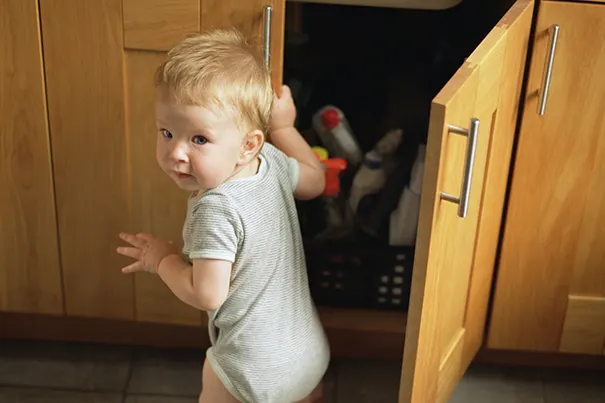Baby-proofing your home
In the blink of an eye, your baby has gone from stationary being to a little person on the move. All this new mobility – rolling, shuffling, crawling or even pulling to a stand – means that he'll be getting into things and places with a lot more ease, and often when your back is turned. Now that he's better at grabbing and moving things around, it's time to do some childproofing.
Here are a few tips to help you get a jump on battening down the hatches:
Move things out of the way Appliances, breakables and cables should be moved away from the cot and bathing and nappy-changing areas.
Get lower for nappy changes Start changing your baby's nappy on a lower surface – even the floor – where he can't roll off. If you continue using a changing table, have a hand on him the whole time you're changing him.
Clear the cot Continue to keep large stuffed animals, bumpers and pillows out of your baby's bed so he can't boost himself out.
Prevent spills Move the cot base/mattress support down so he can't fall over the top rail.
Watch out for sharp corners Put corner guards on table edges to prevent painful knocks and scrapes.
Bar the stairs Set up barriers at the top and bottom of the staircase so he can't climb up or down when you're back is turned.
Electricity Cover electrical outlets, even if they're too small for his little fingers. It's best to just avoid the risk of a shock.
Use cupboard door latches Keep little ones out of cupboards with dangerous or breakable items such as medication, cleaning products, glasses, etc.
Watching your baby discover more of his world is amazing, but it also means that he's more exposed to potential danger. By taking the steps to properly childproof your home, he can explore his surroundings while staying safe.

